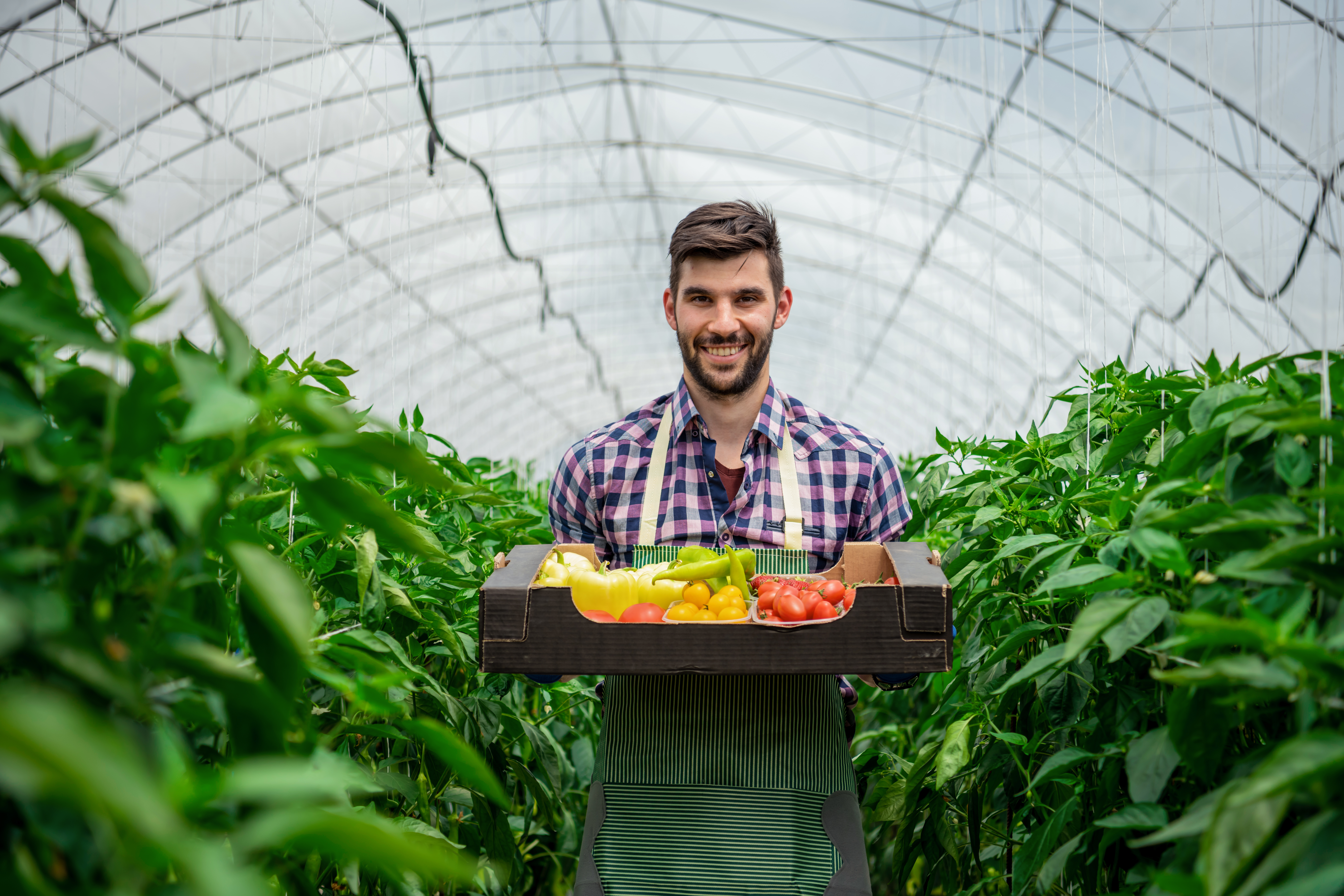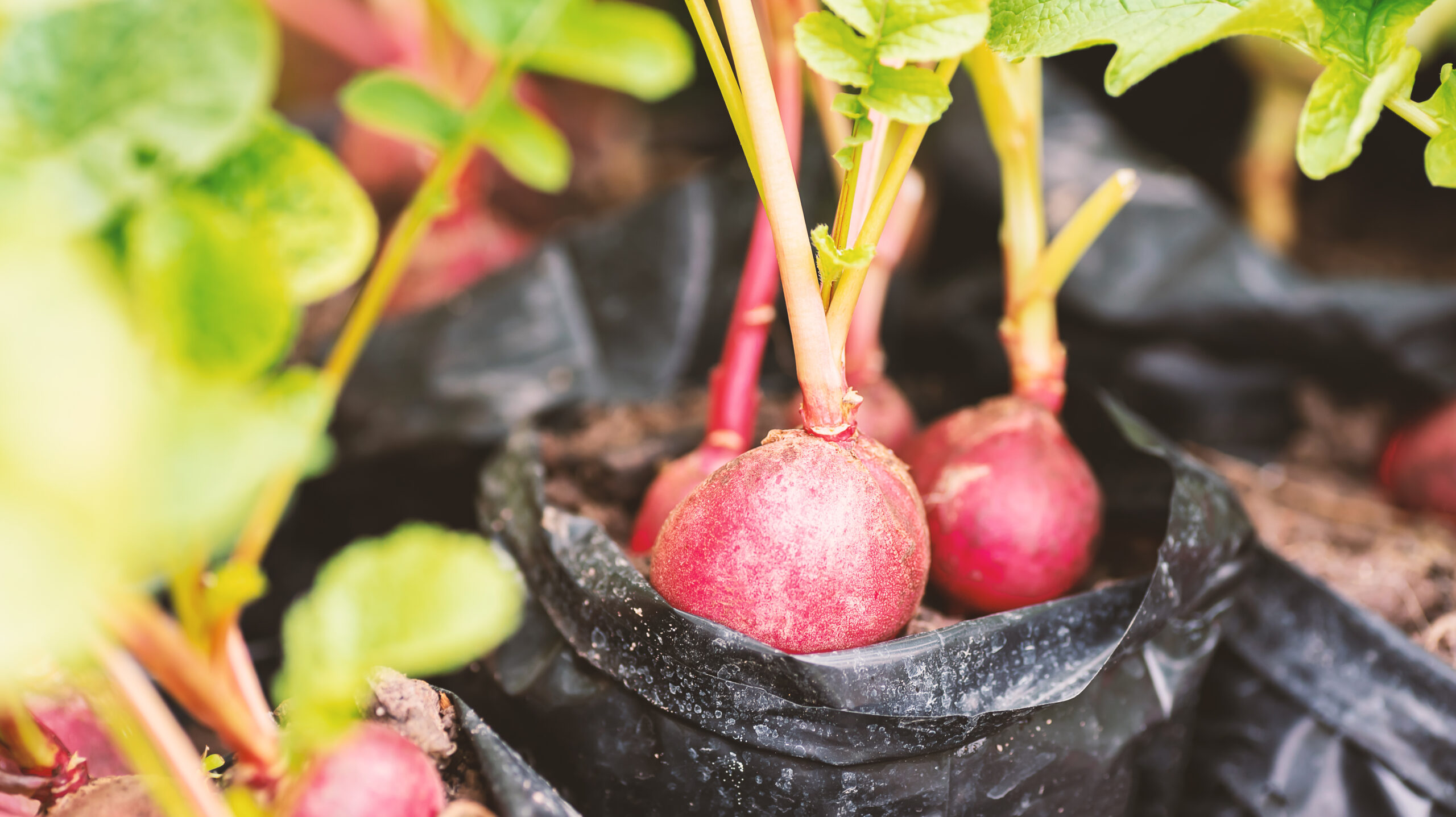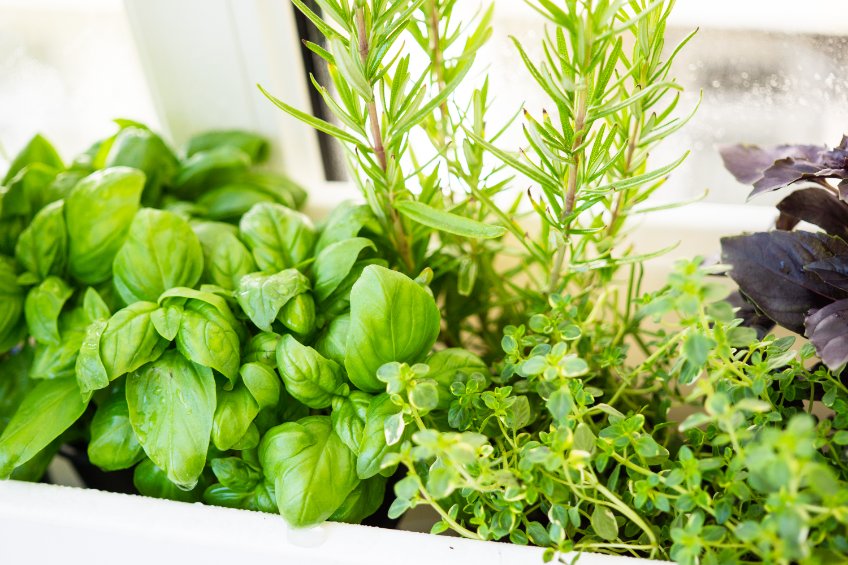How to Plan a Vegetable Garden for Your Back Deck
Even with limited space, home-harvested produce is an achievable goal for almost every gardener.
For many of us, the words “vegetable garden” bring to mind a small plot of land fenced off from rabbits and groundhogs, or perhaps a few raised beds arranged in orderly rows. Those of us who grew up with vegetable gardens may have fond memories of spring mornings spent hoeing neat rows in the soil for radishes, or heaping mounds of earth to plant zucchini and pumpkins. We also remember hours of weeding every summer, the long trek to gather beans for dinner, and the disappointment of a crop lost to hungry rabbits.
Vegetable gardens are a wonderful way to enjoy your backyard, but they can also be a lot of work, and may not be a possibility for those with less space. Fortunately, it’s perfectly possible to grow a vegetable garden right outside your back door, on your deck or patio space.
In fact, growing a vegetable garden on your back deck (or patio, or balcony, or driveway) comes with many advantages! These include:
- You have vegetables right at your fingertips!
- Fewer weeds make for less maintenance.
- Raised beds allow for more comfortable harvesting.
- Fewer pests can damage your harvest.
If you’re ready to try your hand at growing garden vegetables for the first time—or if you’re interested in having vegetables closer at hand—follow these steps to plan your back deck vegetable garden.
1. Plan your space.
Before you get too invested in any specific garden plan, step out onto your patio and have a look around. How much space do you have, and how do you plan to use it?
For some gardeners, their back deck may be extensive enough to build several large planters. In this case, your garden may be more like a raised vegetable bed! For many of us, our back patio is enough for a couple large barrel planters and a few pots. Those with truly limited space, such as on a balcony, may need to consider going vertical with tiered planters. The space available to you is the biggest determiner for how many vegetables you can plant, so make your assessment carefully.
Next, consider the sun and weather conditions of your space. Most vegetables will want full sun for at least 8 hours a day, so if your balcony has a large overhang, you will need to position your planters where they can get the most sunshine. On the other hand, if you are planning a garden on your apartment balcony, you may want to position your plants where they will have some protection from strong wind and the elements.
2. Choose your vegetables.
Most vegetables work well on a back deck, but there are some exceptions. While some squashes can be grown in containers, large, sprawling plants such as watermelon and pumpkins aren’t the best choice. Similarly, large crop vegetables, such as corn, are unlikely to do well.
However, that still leaves most of your favorite fruits, vegetables, and herbs on the table. Think about what you cook with most, and start from there. Popular vegetable crops for patio gardening include:
- Tomatoes (determinate or indeterminate*)
- Tomatillos
- Cucumbers
- Zucchini and summer squash
- Butternut squash
- Eggplant
- Peppers
- Bush beans
- Cabbage
- Broccoli and cauliflower
- Lettuce
- Kale
- Chard
- Collards
- Spinach
- Okra
- Microgreens
- Turnips
- Green onions
- Radishes
Some small fruit trees also do well on patios, including figs, plums, cherries, and dwarf varieties of peach or apricot.
Most importantly, don’t forget your herbs! A patio herb garden is ideal for home gardeners, as herbs grow well in pots, reproduce fast enough to be used throughout the summer season, and can be brought indoors to extend harvest into the fall. There’s nothing easier than stepping outside to snip off a handful of parsley, basil, rosemary, or thyme while making a meal.
* You may not have heard of this distinction before, but it’s especially important for patio crops. Determinate tomatoes have a compact, bushy shape, and are a good choice for patios. However, they have an earlier and shorter growing season, and their fruit is also smaller. Indeterminate tomatoes are more like vines, which means they sprawl. You will need a lot of space to successfully grow indeterminate tomato plants on your patio, but if you do, you will be rewarded with a longer growing season and larger fruit.
3. Pick the right container size.
Next, choosing the right container size for your plants is key to ensure they have enough room to grow strong roots. The larger your plant, the larger a pot you will need to give it space to grow. For each plant you will need pots or planters of these approximate sizes:
- 1–2 gallons (7–8-inch pot): Small- or micro-sized vegetables, including most herbs, lettuces, microgreens, and spinach.
- 5–8 gallons (10–14-inch pot): Medium-sized vegetables, such as brassicas (like cauliflower and broccoli), determinate tomatoes, and cucumbers.
- 8–10 gallons (15–16-inch pot): Large vegetables, including eggplant, zucchini, peppers, tomatillos, and bush-type squashes.
- 10–15 gallons (16–18-inch pot): Extra-large vegetables, such as indeterminate tomatoes, pumpkins, melons, and artichokes.
If you want to plant multiple plants in a single container, just add up how many gallons of space each plant needs. For instance, a 24–30-inch wine barrel planter should hold 25–30 gallons, which would be enough to allow you to plant a vining plant supported by a trellis along with a few smaller plants that grow closer to the soil.
If you’re using planters, you can also plant vegetables in rows. Onions, radishes, and even potatoes grow well this way, as do lettuces and microgreens. Shallow-rooted vegetables don’t need a deep pot.
4. Use the right soil mix.
When planting your vegetables, don’t just use soil from your back yard. Not only is this soil heavier than a potting mix, it’s also unlikely to contain some of the nutrients your vegetables will need to thrive. Instead, use this soil only to fill up very large pots, such as barrel planters, halfway. Then use potting soil for the rest.
Next you’ll have to think about fertilizer. Mixing worm castings are a type of soil amendment that adds nutrients to the soil as well as improving its physical condition in ways that allow for better water penetration. Many potting mixes also come with slow release fertilizers mixed directly into the soil which will keep your plants healthy for the first month or two. After that you’ll want to consider adding more fertilizer to support your plants through the rest of the growing season.
5. Water daily and harvest regularly.
Finally, back deck gardens need to be watered daily—especially during the heat of summer. Pots and planters don’t retain water as well as gardens planted directly into the ground, which means that if you skip a day of watering you’ll notice your plants immediately begin to droop. While they will spring back quickly upon being watered again, irregular watering will mean a lower yield come harvest time.
Speaking of harvest, many popular garden plants, such as tomatoes, cucumbers, beans, and zucchini, produce a better crop if they’re picked as they ripen. Some plants, such as beans and cucumbers, if left on the vine too long, grow overly large and tough. Picking them when they’re still young will encourage your plant to devote more energy toward growing new fruit, rather than the existing ones.
Many crops, especially herbs, spinach, and some lettuces, need to be regularly harvested to prevent them from bolting. Making a habit of coming out and snipping a few leaves for your meals can help you enjoy your harvest all summer long.
Frank’s is here for all your patio garden needs.
As always, Frank’s is here to help you make your biggest garden aspirations a reality. Alongside a full selection of garden plants, vegetables, fruit trees, and herbs, we also have experts ready and waiting to answer your questions and help you make choices that will allow your outdoor spaces to flourish.
As your gardens grow, we hope you’ll share your success with us! Drop a line in the comments to say what your favorite vegetable is to grow, or share pictures of your garden progress on our Facebook and Instagram pages. We look forward to seeing your green spaces thrive!



